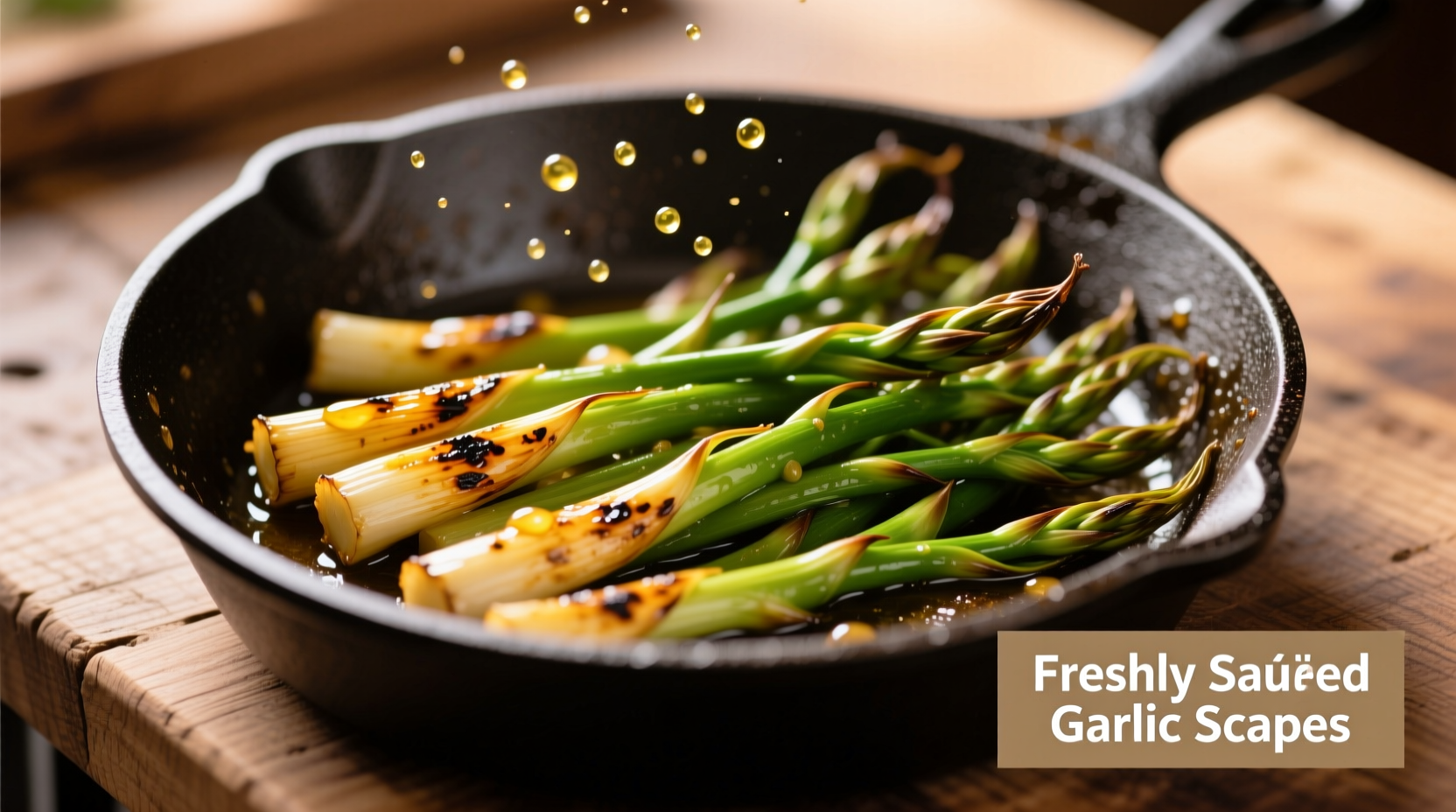Unlock the full potential of this seasonal delicacy with our chef-tested sautéing technique that transforms garlic scapes from overlooked garden trimmings into a star ingredient. You'll learn exactly how long to cook them, the perfect heat level to prevent bitterness, and creative ways to incorporate them into everyday meals—plus discover why June through July represents peak flavor when these curly greens appear at farmers' markets.
What Exactly Are Garlic Scapes?
Garlic scapes (Allium sativum) are the flowering stalks that emerge from hardneck garlic varieties before bulb maturation. Unlike mature garlic cloves, these tender shoots offer a milder, more nuanced flavor profile with subtle grassy notes. Harvested when still young and flexible, they're typically available for just 4-6 weeks each spring through early summer.
"Garlic scapes represent one of spring's most fleeting culinary treasures," explains Antonio Rodriguez, professional chef and spice technique specialist. "Their brief season makes proper preparation crucial—you want to capture that fresh, green essence before they toughen."

Why Sautéing Beats Other Cooking Methods
While garlic scapes can be grilled, roasted, or even eaten raw, sautéing delivers the most consistent results for home cooks. The controlled heat exposure:
- Preserves their vibrant green color better than boiling
- Develops complex flavor compounds without burning
- Maintains optimal tender-crisp texture
- Allows for easy flavor layering with complementary ingredients
Step-by-Step Sautéing Guide
Follow this professional technique for perfectly cooked garlic scapes every time:
- Preparation: Trim off the very tip (about 1 inch) and any tough, woody ends. Cut into 2-3 inch segments.
- Heat Control: Use medium heat (350°F/175°C)—too high causes bitterness, too low makes them soggy.
- Fat Selection: 1 tbsp high-smoke point oil (avocado or grapeseed) plus 1 tsp butter for flavor complexity.
- Cooking Time: Sauté 3-5 minutes, stirring frequently, until bright green and tender-crisp.
- Finishing: Remove from heat just before reaching desired tenderness (they'll continue cooking off-heat).
| Cooking Stage | Visual Cue | Texture Test |
|---|---|---|
| 0-2 minutes | Dull green, limp appearance | Very flexible, bends easily |
| 3-4 minutes | Bright emerald green | Tender-crisp, slight resistance |
| 5+ minutes | Olive green, starting to brown | Soft, no resistance |
Seasonal Availability Timeline
Understanding garlic scape seasonality ensures you're cooking with peak-quality ingredients:
- April-May: Early harvest in southern regions (milder flavor, thinner stalks)
- June-July: Prime season across most North American growing zones (optimal flavor and texture)
- August: Late harvest (thicker, more fibrous stalks requiring longer cooking)
According to USDA agricultural data, garlic scapes reach maximum nutritional value during their mid-season harvest period when allicin compounds are most concentrated before bulb formation begins.
Culinary Applications Beyond Basic Sautéing
Transform your sautéed garlic scapes into versatile kitchen staples:
- Pasta Enhancer: Toss with olive oil, lemon zest, and parmesan for instant gourmet sauce
- Stir-Fry Foundation: Add during last 2 minutes of cooking for fresh garlic notes
- Compound Butter: Blend with softened butter and freeze for instant flavor boosts
- Pickling Base: Quick-pickle in vinegar solution for year-round use
Avoid These Common Mistakes
Prevent these frequent errors that compromise garlic scape quality:
- Overcooking: Results in mushy texture and bitter flavor (stick to 5-minute maximum)
- Cold-to-hot transition: Adding scapes directly from refrigerator causes steaming instead of sautéing
- Overcrowding pan: Leads to uneven cooking and loss of vibrant color
- Adding salt too early: Draw out moisture and prevent proper browning
Nutritional Benefits Worth Savoring
Beyond their culinary appeal, properly cooked garlic scapes deliver impressive health benefits. Research from Cornell University's agricultural extension shows that brief sautéing preserves 85% of their allicin content—the compound responsible for garlic's celebrated health properties—compared to just 60% retention when boiled.
One cup (90g) of cooked garlic scapes provides:
- 120% of daily vitamin C requirements
- Significant calcium and iron content
- Antioxidants comparable to mature garlic cloves
- Negligible calories (45 per serving)
Storage Techniques for Maximum Freshness
Extend your garlic scape enjoyment beyond their short season:
- Fresh storage: Wrap in damp paper towel, place in perforated bag in vegetable drawer (lasts 2-3 weeks)
- Freezing: Blanch 90 seconds, ice bath, then freeze flat on baking sheet before transferring to bags (6 months)
- Pickling: Preserves texture and flavor for 6-8 months in vinegar solution
Flavor Pairing Recommendations
Complement your sautéed garlic scapes with these chef-approved combinations:
- Spring Pairings: Asparagus, morel mushrooms, fresh peas
- Protein Matches: Salmon, chicken thighs, white beans
- Acidic Balancers: Lemon juice, apple cider vinegar, white wine
- Texture Contrasts: Toasted pine nuts, crispy breadcrumbs, shaved parmesan











 浙公网安备
33010002000092号
浙公网安备
33010002000092号 浙B2-20120091-4
浙B2-20120091-4